Nordwind 1939, gearing up for the Northwest Passage!
A Camden Harbor 2012 spring bonus has been getting to know that classy 85-foot wooden yawl as she prepared for an attempt at the Northwest Passage. Her name is Nordwind though her mainsail cover and life rings are marked Nordwind 1939, presumably in memory of both her launch year and the Fastnet Race in which she set a record that held for twenty-four years. Some of this history can be found on Nordwind’s 2011 Transatlantic Race page along with mention of her recent rounding of Cape Horn. This old boat still gets around! I suspect that her greatest asset for the adventure north is the fact that her professional skipper, Alex Veccia, has already sailed her so many hard miles. But if you look closely in her rigging, you’ll see that he will have some new electronic helpers…
I was one of several people who helped Alex figure out what might help with the many forms of floating ice that Nordwind may encounter during her long voyage. For instance, a FLIR contact pointed us to some detail about how well thermal cameras can detect ice (if you download the “application note” you’ll learn that there are several reasons why thermal can “see” ice as quite distinct from ice cold water). But it was Wayfarer Marine’s electronics guy Mike Gaulin who was wise enough to suggest testing the unstabilized Raymarine T450 combo cam system at a couple of heights before committing to the high mount seen below, which took advantage of an existing lighting bracket…
The install I telephoto-ed above wasn’t quite done but it turned out slick and it practically disappears in the rig especially as Mike ran the cables in a silver mylar mesh sheathing that nearly matches the shroud their cable-tied to (see inset). It made sense to go with Raymarine’s version of the FLIR technology because Nordwind already had a C90W MFD installed and another upgrade Alex (and Nordwind’s owner) decided on was to get rid of an old RL70 radar system and replace the mizzen radome with a digital HD model that works with the C90W. It was easy to assure Alex that he’d see significantly better performance from the RD418HD as I’ve seen both generations on Gizmo (HD goodness just discussed).
You can also see a Vesper Marine Watchmate 850 Class B AIS and a Sea Marshall MoB system in Nordwind’s doghouse. And while I wouldn’t be surprised if they went to a bigger Raymarine chart/radar/camera display eventually, which might also mean touch control of the camera system, I bet they’ll still keep the joystick control built into that portable teak box…
I say that because the camera output is split so that it can also be seen on a monitor that lives on the other side of the doghouse and is used for MaxSea charting and weather. Mike had to use a composite video-to-VGA converter (Impact Acoustics “TV to PC Converter”),
which muddied the camera output a bit, but that screen too could be easily updated (to one that also handled video directly). Getting the mast-mounted cameras and radar in order was the hard part.
Alex promises to report on how well this all works in the Northwest Passage, but I’ll also be interested to hear how much they use the cameras in more normal conditions. As you can somewhat see from these pictures it’s like having a set of good eyes way up the mast, and with the petite PTZ cams Garmin and others have introduced, it’s become a possibility on much smaller boats (and not wickedly expensive if you go with low light only).
Now, while it has nothing to do with electronics, you too may be interested in seeing more about how this boat was built, not to mention the sort of infernal projects boatyards often face. From the beginning Nordwind had plenty of steel framing hidden away beneath her deeply varnished mahogany interior, and even five waterproof bulkheads, but during one refit a fuel tank got installed that apparently chafed enough somewhere that it developed a leak. Which is why you see the tank as clean and opened up as it is below, and why there’s so much ventilation equipment in sight. Yes indeed, a Wayfarer welder fixed that tank from the inside, and hat’s off to him. He also built a solid but removable mount for a diesel heater that now resides at the bottom of the main companionway while another is ready to keep the fo’castle cozy…
So here’s wishing Capt. Veccia and his international crew a safe passage around the top of our continent. I didn’t get into it here, but he’s already well equipped and skilled with satellite and SSB communications and hopefully will check in from time to time. Good luck, Alex!


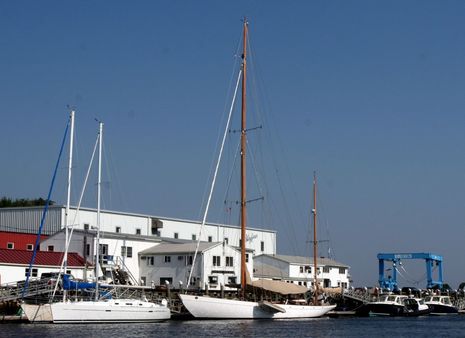
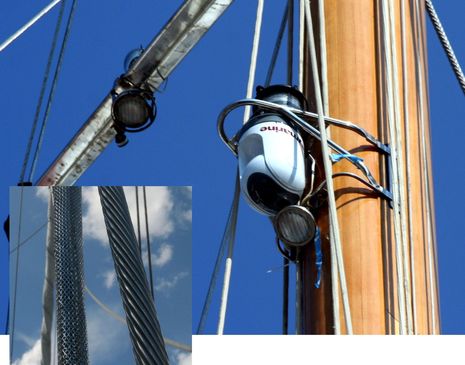
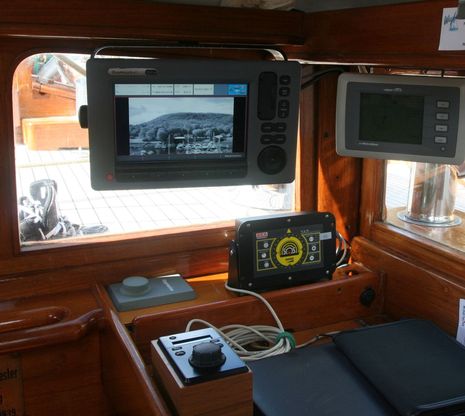
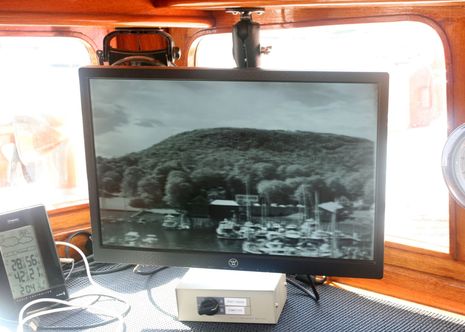
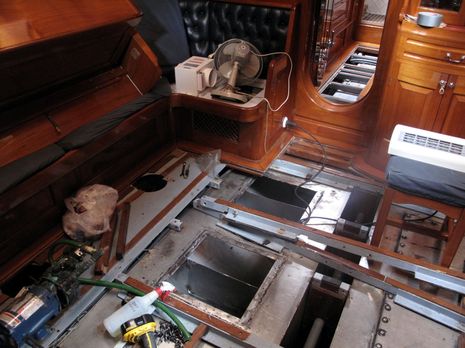


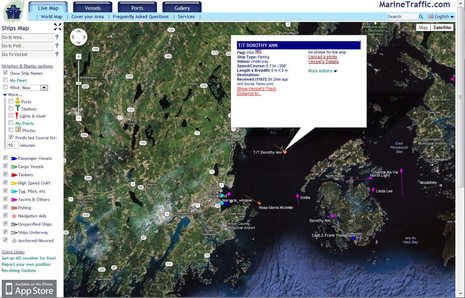
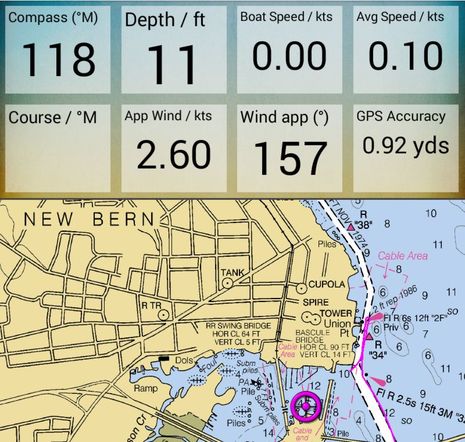
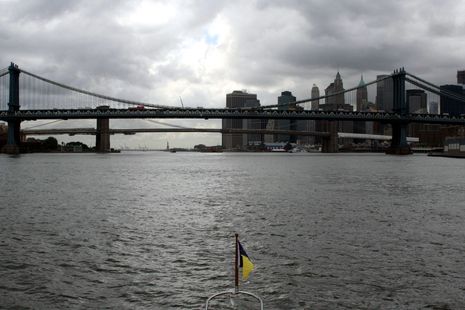







Hi
Northabout http://www.northabout.com/index.htm transited the NW passage from Labrador, in the west to Nome in Alaska in 2001, in a 49 ft French designed, amateur constructed, Aluminum boat and in 2004/05 completed the North East passage from Alaska to Siberia around the top of Russia to North Cape, Norway.
Equipment by Nordwind standards was sparse, but successful even though the NE passage through Siberia required two seasons to complete.
Thanks, Noel. I meant to mention that Alex showed me some excellent reference material about Artic cruising and the Northwest Passage that’s freely available from the RCC Pilotage Foundation:
http://www.rccpf.org.uk/passage-planning/arctic
Even if you don’t ever intend to make such a passage, these documents are full of interesting photos and info. And, yes, much smaller and less well-equipped boats than Nordwind have completed the Passage, though I think she may be the first “Classic” if all goes well. But they’ve already ran into a snag, apparently having to rent a car and drive to Halifax, NS, to fix a visa problem before sailing to Canada from Maine!
Speaking of exotic voyages — though much easier and warmer — I saw Bruce Kessler this week and it sounds like his powerboat rally to Cuba may actually come off next year:
http://www.fubarodyssey.com/aspx/m/1230045
Bruce and Joan are again cruising Maine on Spirit of Zopilote, which is wonderful:
https://panbo.com/archives/2007/07/on_soz_with_bruce_fubar.html
I hope you are right on the Cuba expedition…we would really like to meet up somewhere, but will be coming from the south. We are one of the 100 plus names on his mailing list.
It will be interesting to see how they go with the FLIR camera. I have been interested in how this will work for a while, and have been offered the cameras for testing but we were not convinced they would handle the thrashing that our rig gets.
It will be interesting to see if they actually encounter ice in latitudes where they have darkness. Wonder how will it will go in fog, that’s when you have a real difficulty seeing ice. If it is just dark you can actually see it quite well with the naked eye.
Saw the boat in the Beagle channel when she was down that way.
Thermal works pretty much the same in daylight as it does in the dark. In fact, you can often use it to see right through glare (because it’s all light and no heat).
With the high mount and the high contrast between ice and water, I think Nordwind’s camera will work well, except in fog. I’ve seen through light “dry” fog with thermal but water blocks the infrared waves and so it can’t see through normal “wet” sea fog.
Yep it is wet fog that is our concern.
I have been in several situations where the best course has been directly up-Sun and it has been very hard to see ice in the water. That can usually be countered by taking up-Sun. Never thought of using thermal in that situation.
Well we might still put a couple of cameras on. RM are a sponsor and supply all the electronics for the vessel in question. We would need two, one each side on the first spreaders probably as we have three great big fat rolls of sail in front of the mast getting in the way of a mount such as they have done on Nordwind. I know the offer is there I just have to convince the owner that it would be a good tool. Hmmmm and as I said am not sure they would be rugged enough to withstand the pounding that the rig takes upwind. The other option is to mount a camera on the pulpit but that is often underwater and I fear it would be swept away.
Slightly sideways question – has anybody tried one of the new G3/G4 radars for ice detection yet? Normal radar is basically useless for the dangerous sized stuff. I think they would be a big improvement but haven’t heard of any real experience yet. Certainly nobody has tried one down south.
If you check MarineTraffic right now (or search later) you’ll see Nordwind leaving Nuuk, Greenland, to cross the Davis Strait. Capt. Alex used Nuuk WiFi today to send me radar and thermal cam pictures of icebergs they’ve already seen (in pitch dark). So far he’s pleased with his new electronics.
Do you think there is any chance of sharing the photos? I’d be interested to see what size, shape, and density the bergs are.
The big bergs are not that dangerous as if you keep a good lookout as you can see them even in pitch dark (with practice and once you know what you are looking for) you can also feel them with you other senses but that’s a different story.
The dangerous bits are growlers around about the size of a car or so. There is unlikely to be a radar return from one of these unless it has fresh angular edges above water and the water is smooth. Very hard to see with the naked eye, but again you can usually see them. Looking out for ice is very hard work and needs to be a constant job and that makes it difficult to do properly when short handed – this is where this technology could come in useful.
They are not great pictures, Tweed, but they should be in your email box.
It there any link to Nordwind website ?. I support many NWP yachts crossing. Looks they are in Grenland now.
Victor, I don’t think Nordwind has a Web site, but I just wrote Capt. Alex via Sailmail to double check. I last saw them on MarineTraffic four days ago. As I recently wrote about, I have MT setup to notify me when she is again spotted, but it may be a long time:
https://panbo.com/archives/2012/08/marinetrafficcom_appreciating_the_nuances_.html
They made it! Late last week Nordwind made it through the Bering Straits is finally headed South. The trip was not easy, as you can read about on the blog of crewman Andrew Sayre:
http://www.sayreinnewzealand.blogspot.com/
Do not miss the his 8/22 entry titled “Sh!t hits fan Bay” in which they lost their main anchor and had the propeller shaft break away from the engine more or less at the same time!
My father was in Naval Intelligence during WWII. I just went through some old photos and found several of him and others on the Nordwind off the Danish coast in 1945. How and why he was there I don’t know (he wasn’t a sailor). There are several good shots taken from the mast down onto the deck. Amazing that she survived the war and even now is thriving.
Lawrence, I bet a lot of us would LOVE to see those photos! Is there any way you can post them online?
my grandfather was responsible for repairing the Nordwind, in 1945, he was a member of Ian Flemings infamous 30au.
he worked on it with 2 German prisoners of war.bone which sadly died from injuries sustained on its first voyage after the war ended.